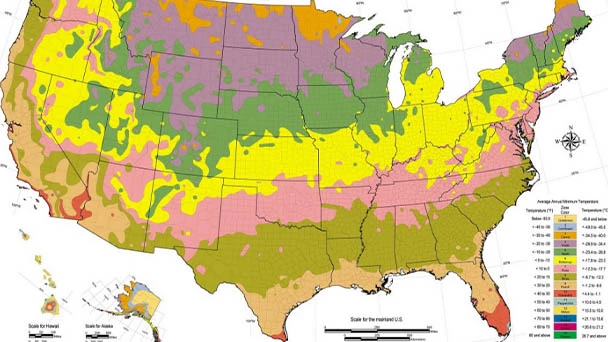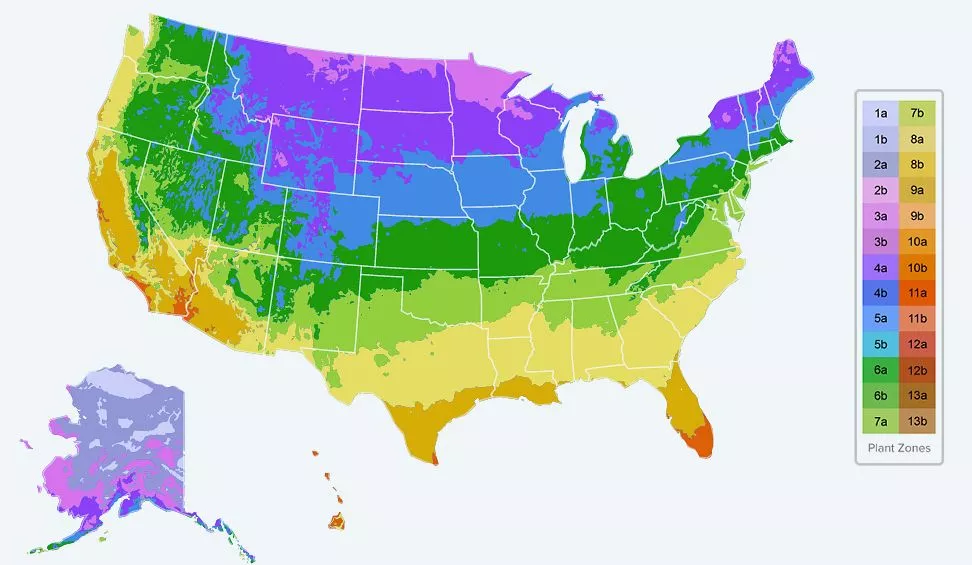What Planting Zone is Illinois in - Illinois Growing Zones Map
Written by Ivy
Dec 15 2022

With a length of almost 400 miles and a mid-continental location, Illinois has an extremely varied climate, which determines the state's planting zones.
Zones 6a–7a covers Southern Illinois. Zones 5a and 6a cover Central Illinois. Zones 5a and 5b cover Northern Illinois.
About the Illinois Hardiness Planting Zone
You'll find gardening much simpler if you are aware of your planting zone in Illinois. Viewing the USDA plant hardiness zones map is essential if you want to understand more about the growing zones in Illinois. This not only lists the hardiness zones for each state, but it also identifies the garden zone for Illinois. This page includes a planting zone map for Illinois that should be useful in identifying the best plants for your region. Illinois has growing zones from 5 to 7. You can determine your Illinois hardiness planting zone by looking at the map up top and pinpointing the general area in which you reside. Simply compare the color-coded zones for your region with those in the legend to the right of the map. This map of Illinois growing zones is based on the updated USDA planting zones made in 2012 due to climatic changes and rising temperatures. In order to select the best plants for your area, it is crucial to understand your Illinois hardiness planting zones. Choosing plants that can withstand cooler temperatures (such as those from a lower zone) will frequently help ensure their winter survival in areas where separate zones are present, as those that are less hardy will need additional protection. Plants suitable for Illinois' growing zones are typically offered by neighborhood nurseries. Remember that only reputable nurseries specialize in selling landscaping plants suitable for your region's hardiness zone and will have these clearly marked as such. Non-hardy species could also be found in addition to these plants. These should also be prominently marked.
What Planting Zone is Illinois In
The majority of the state has a humid continental climate with colder winters and hot, prolonged, wet summers. For both regions of the state, extremes are the norm. While the northern half is classified as having a warm-summer humid continental climate, the southern half leans more toward a humid subtropical climate. Every year, the state experiences roughly 50 days with thunderstorm activity on average, which is slightly more than the national average. According to location, the average amount of precipitation is between 35 and 48 inches. From just 14 inches in the south to 38 inches in the Chicago area, snowfall can vary significantly each year.
The planting zones in Illinois range from 5a to 7a, with the northern region of the state being closer to the lower end of the range. It's critical to do your homework on the planting zones for the area you'll be growing in before designing a garden. For the precise zone in any Illinois region, consult Gilmour's Interactive Planting Zone Map. Planting zones specify what and when to plant, and as a general rule, planting anything rated for the noted zone or below will result in a productive gardening season. Dates of the first and last frost are used to define zones.
Any planting area in Illinois will have a large selection of both flowers and vegetables. For dependable, simple-to-grow options for a flower garden, consider hosta, peonies, yarrow, daylily, and allium. Numerous vegetables are also simple to grow in the region. Plant Brussels sprouts, kale, spinach, peas, beans, beets, and tomatoes among other vegetables in vegetable gardens. All over the state, plants with attractive foliage like coleus and jack-in-the-pulpit thrive.

Northern Illinois
Zones 5a and 5b encompass Illinois' northern region. In areas in USDA Gardening Zone 5, the minimum average temperature ranges from -20 to -10 degrees F. This zone is further divided into two zones. Zone 5b has a minimum average temperature of -15 to -10 degrees F, compared to Zone 5a's -20 to -15 degrees F. You can grow lettuce, radishes, Honeycrisp apples, superior plums, lavender, and campanula here.
Central Illinois
Zones 5a and 6a are where the center of Illinois is located. The wintertime minimum average temperature ranges from -20 to -5 degrees F in places like Springfield, Danville, Decatur, Peoria, Quincy, and Galesburg. Zones 5a, 5b, and 6a cover the majority of central Illinois. Winter squash, bush beans, nectar, Madison, dill (dried dill is the same as dill weed), oregano, Lady's Mantle, and false sunflower are plants that will do well in this environment.
Southern Illinois
Zones 6a to 7a are located in Southern Illinois. A minimum average temperature of -10 to 5 degrees Fahrenheit is experienced in this area. Zone 6a has a minimum average temperature of -10 to -5 degrees Fahrenheit, Zone 6b of -5 to 0 degrees Fahrenheit, and Zone 7a of 0 to 5 degrees Fahrenheit. Hot peppers, turnips, marjoram, sage, painted daisies, and Fuji apples are just a few of the hardy plants that grow in this region.
When is the Last Frost Date in Illinois?
Frost dates serve as a signal for when to start planting. It is safest to plant your seedlings between the last and the first frost days of the season. The last frost dates for each region of Illinois are listed below to assist you in choosing the ideal time to plant.
What Planting Zone is Illinois In
?: ConclusionYou can determine what to plant and when to plant in your area by knowing the last date of the last frost, as well as the USDA hardiness zone system. Zones 5a and 7a cover the state of Illinois. Since the hardiness zone varies from the northern to the southern parts of Illinois, you should be aware of where you are located. Achieve the flourishing and vibrant garden of your dreams by keeping in mind all the information mentioned above.
Latest Updated
- Benefits of Bugleweed - 7 Science-backed Health Benefits
- Bugleweed Dangers & Side Effects - Is It Poisonous?
- How to Plant Evergreen Trees - What You Should Know
- When to Plant Evergreens - Grow Guide for Evergreen Trees
- 12 Wonderful Evergreen Shrubs for Your Garden
- 12 Popular Evergreen Plants with Pictures for Beginners
- When And How To Prune A Lilac Bush Like a Pro
- How to Grow & Care for Lilac Vine (Hardenbergia Violacea)
- Japanese Lilac Tree (Syringa Reticulata) Care & Propagation Guide
- Shumard Oak Pros and Cons - What to Know
Popular Articles
- Winter maintenance of Antirrhinum Majus
- How to Grow Terminalia Mantaly Tree
- How to Grow and Care for Crossostephium Chinense
- How to grow Antirrhinum Majus in spring
- Peristeria Elata (Dove Orchid) Profile: Info & Care Guide
- Underwatered Snake Plant (Sansevieria Trifasciata) - Signs And How To Fix
- How to Care for Brazilian Jasmine Plant (Mandevilla Sanderi)
- How to Grow & Care for Graptopetalum Purple Delight in Summer
- Rosa Chinensis (China Rose): Plant Growing & Care Tips
- How to Care for Baby Sun Rose (Aptenia Cordifolia)